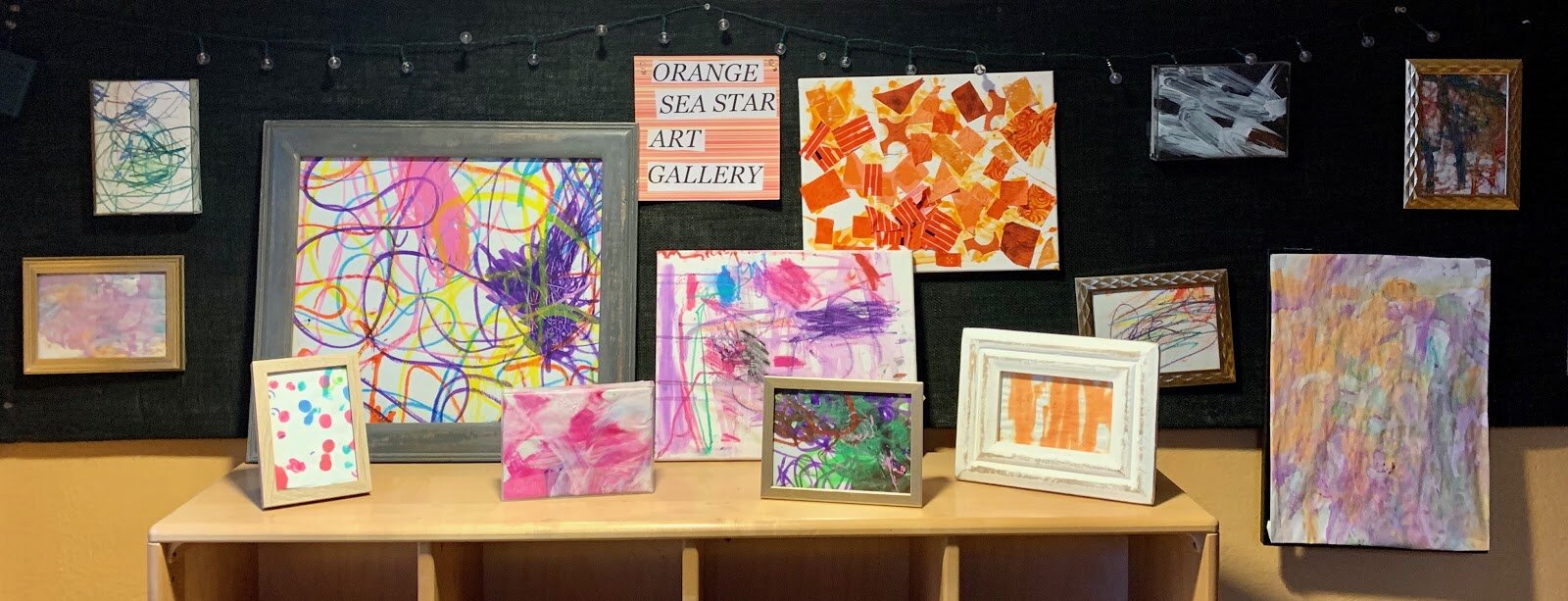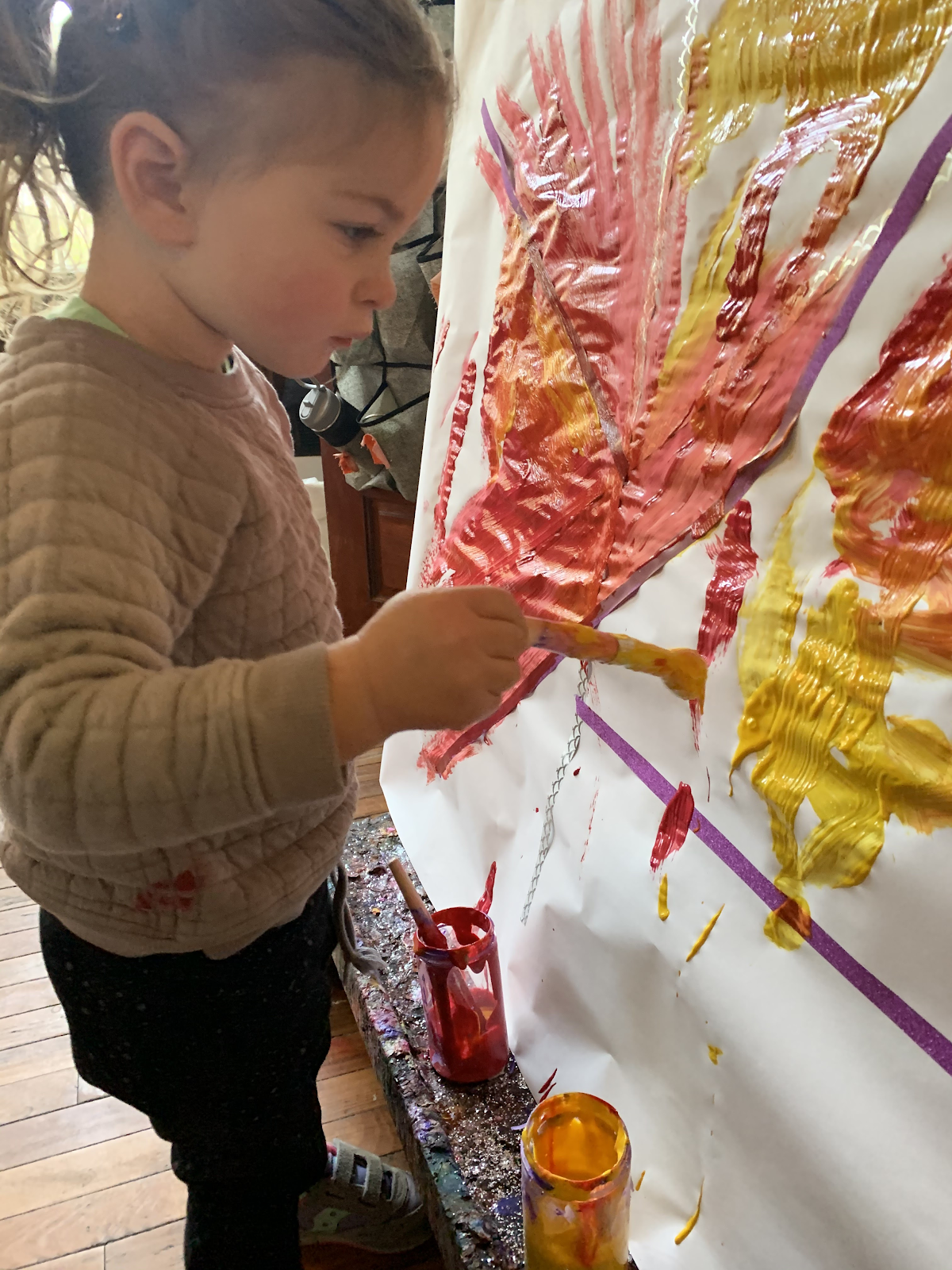A Gallery of Marks
For the first part of the school year, the Orange Sea Star Teachers offered their 22-to 31-month-old students many opportunities to make marks on paper.
Children worked at the easel, on the tabletops, and even on the floor as they created masterpiece after masterpiece using a variety of materials. As the weeks went on, the teachers began to collect and curate the children’s artwork in the Orange Sea Star Art Gallery at the entrance of their classroom and thoughtfully displayed the pieces for all members of the community to enjoy — adults and children alike.
Each piece in the gallery is unlike any other. In this Reggio-inspired classroom, there was not an expectation that all children would make or contribute to the same creations. Students were offered diverse materials intended to provoke their varied strengths and interests, with the expectation that they would be inspired by different things. The concept of a “hundred languages” — an idea that children have numerous means of expressing themselves and that each and every one of these means are valid and valued — is evident in the way each of the Orange Sea Stars uniquely created and contributed to these beautiful projects.
Knowing that their students’ seemingly ”primitive” designs were instead complex demonstrations of the children’s knowledge and capabilities, the teachers used the same level of intention in displaying the children’s work as the children had used in creating it. By framing children’s art, teachers convey their appreciation for the work, affirm the value and beauty of the creations, and validate children’s developing skills.



